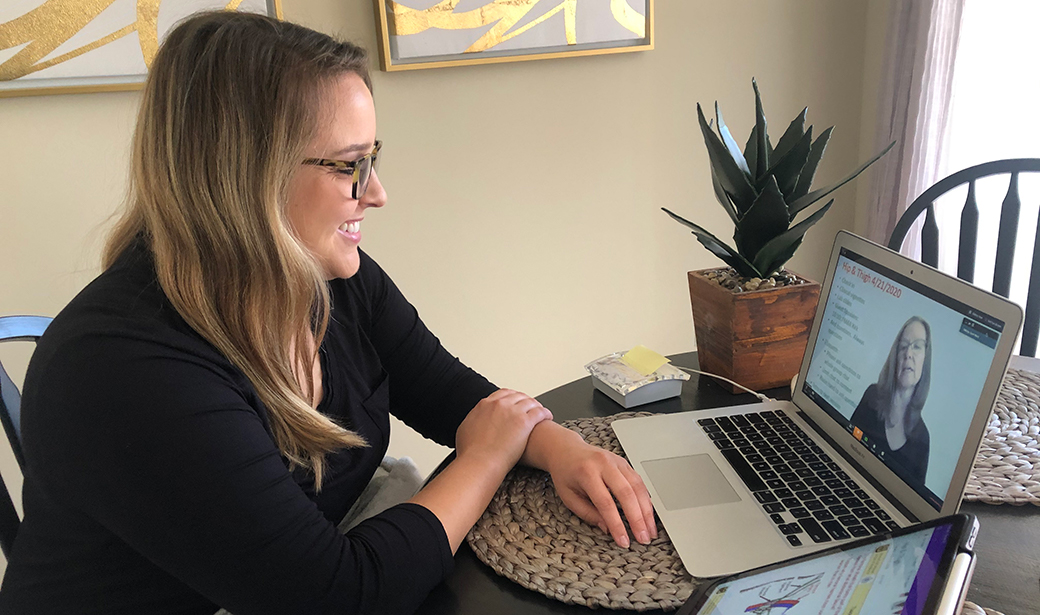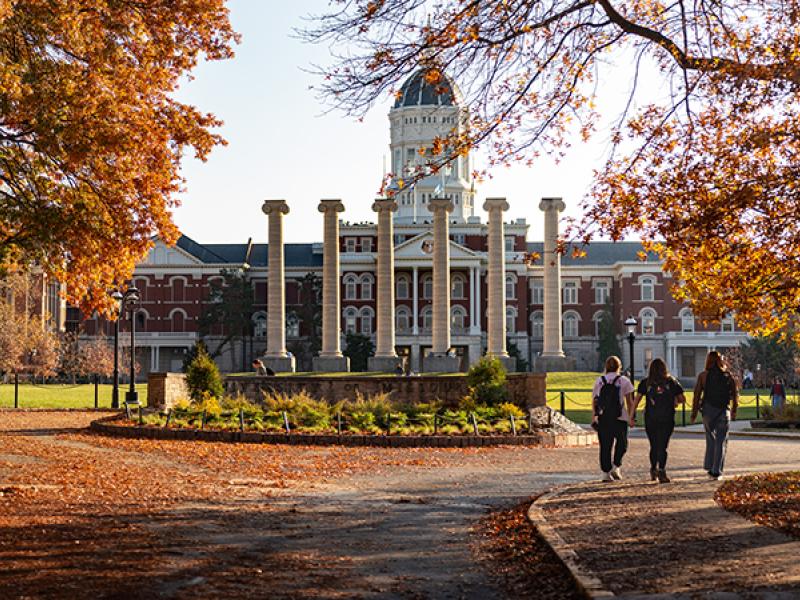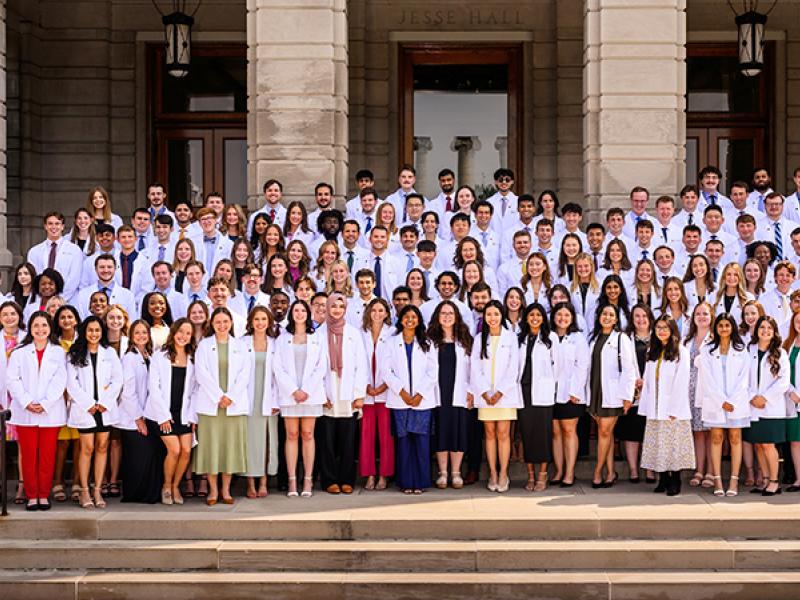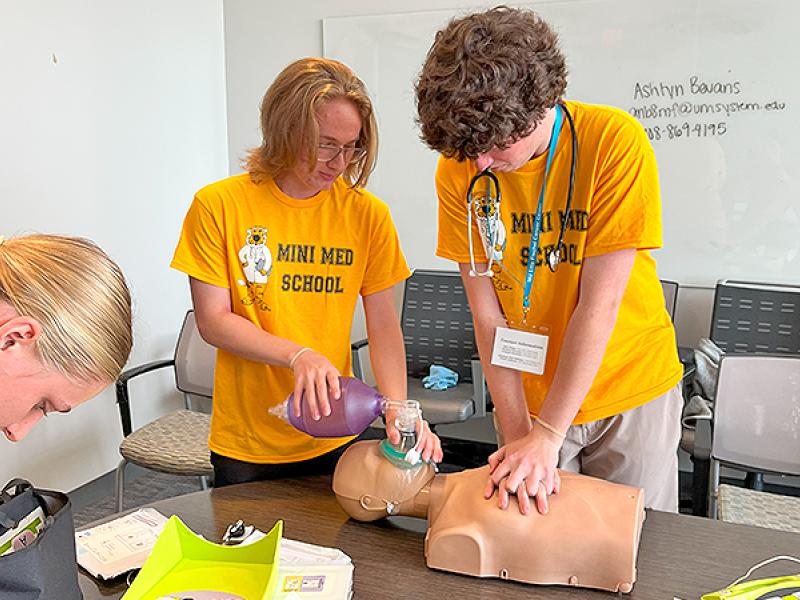
The final block of the year for the MU School of Medicine was about to begin when the university announced on March 11 that it was suspending all in-person classes because of the COVID-19 outbreak. MU’s medical school leaders also complied with the Association of American Medical Colleges’ recommendation to pause all medical student direct patient contact activities during the pandemic.
Just like that, a curriculum that traditionally begins with learning together in small groups and ends with hands-on clinical experience had to be transformed in real time.
“I am incredibly appreciative and proud of the efforts of our faculty and entire medical education team during this transition to an online learning curriculum,” said Kevin Kane, MD, Senior Associate Dean for Medical Education. “Although there’s no real substitute for direct patient care learning, we have implemented innovative ways to continue teaching our students the necessary knowledge and skills needed to be a physician. It’s really a balance of how we continue to provide the highest quality educational experience, balanced with ensuring the safety of our learners and community.”
The show has gone on.
The first- and second-year students are continuing to study basic science, learn from clinical cases through problem-based learning (PBL) and develop clinical skills in Introduction to Patient Care (IPC). Rather than meeting in lecture halls or PBL classrooms, they are participating in meetings using the Zoom video conferencing app.
“Instead of driving to school, attending lectures in the morning and then going upstairs for PBL, I wake up and log into Zoom, where I will watch a lecture or ask questions about a prerecorded lecture,” first-year medical student Sophi Farid said. “Afterward, I’ll transition to a different Zoom link, where it’s only the people who would have been in my PBL lab. After lunch on Mondays, we have IPC lectures in the afternoon. Those are either prerecorded, or it will be a live session while everybody is on Zoom.”
Kevin Everett, PhD, the Block 4 PBL director, said the transition to online PBL went smoothly.
“I was really pleased in the first session I did with my group that about halfway through, one of the students spontaneously said, ‘Hey, we’re doing PBL,’ ” Everett said. “It felt real to them.”
Everett said one of the biggest challenges was giving the first-year students a worthwhile anatomy experience without the opportunity to dissect in the anatomy lab. The School of Medicine began a subscription to an anatomy video service so students could watch dissections. Everett said students thought it would be helpful to watch those videos even after the anatomy lab reopens so they would be more prepared to dissect.
That is one example of how necessity could breed innovation.
“Obviously, this isn’t what any of us planned, but we can try various things out and experiment a little bit to see if we can improve the educational experience for medical students,” said Amelia Frank, MD, the co-director of Block 4 IPC along with Alicia Ludden-Schlatter, MD. “One thing we’ve been trying is doing lectures in a podcast style, having Alicia or me be the host of the podcast and having the lecturer give the information to us. That allows them to not lecture to an empty room and lets us act as a questioner and moderate any questions coming over Zoom.”
Because the Block 4 IPC deals with epidemiology — the study of the incidence, distribution and control of diseases — Frank said they have woven COVID-19 into the lectures and discussions.
Third- and fourth-year students would normally be getting clinical experience during required and elective clerkships. They are learning virtually rather than in clinics out of concern for their and patient safety and the need to conserve personal protective equipment.
“It’s not an ideal situation, but we went through our curriculum and tried to find all our goals and objectives and the number of patients we would want the students to see,” said Aaron Waggie, DO, an associate director of the child health clerkship. “Then we tried to find activities that correspond with those goals.”
Waggie said his students are learning from prepared cases provided by Aquifer, a company that produces medical education videos that show real physical exams and patient interviews. In the child health clerkship, students are also doing mock inpatient rounds, presenting their notes on sample patients to attending physicians. And as doctors have begun seeing more patients through virtual care, students have been able to join in on the video visits.
Omar Taranissi, a fourth-year student completing a child and adolescent psychiatry clerkship under the direction of Ravi Shankar, MD, said he has been able to participate in multiple patient interviews via Zoom.
“I’ve been able to lead the interview on patients and been able to observe Dr. Shankar when he’s been interviewing patients,” Taranissi said. “That’s a really valuable experience.”
One thing that can’t be replicated virtually is the camaraderie between classmates on the Columbia and Springfield campuses, and that’s what students and faculty are missing as they wait for the end of the COVID-19 threat.
“I do miss the interaction with everyone,” first-year student John French said. “I know some people enjoy doing classes virtually, but we’re going to be dealing with people for literally the rest of our career and part of that is being with others.”





